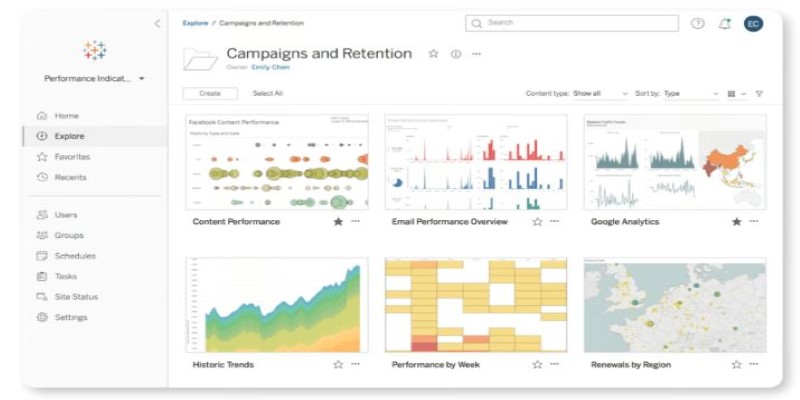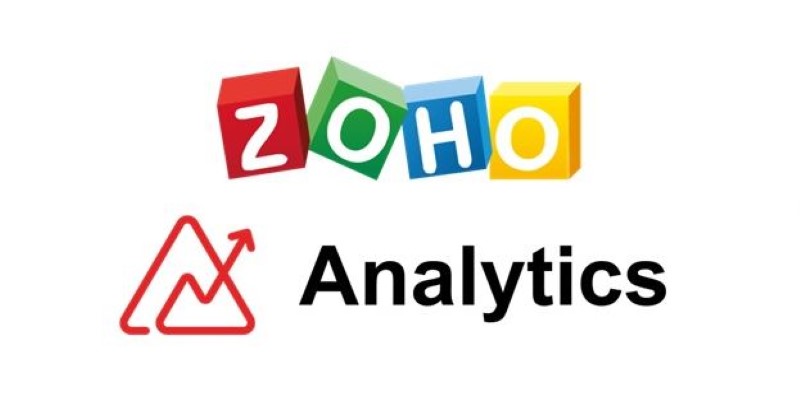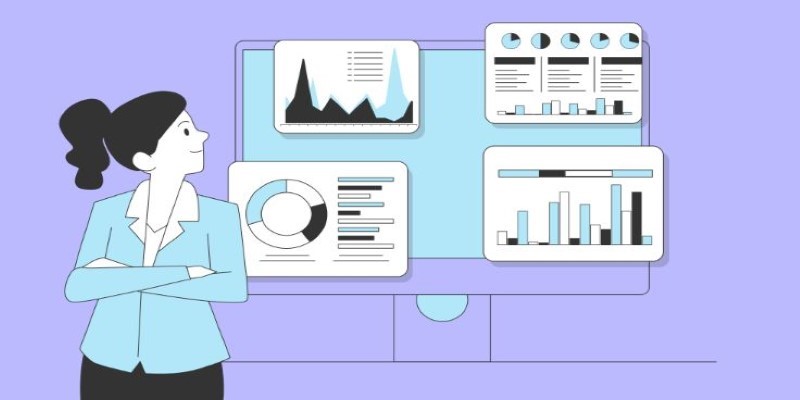Advertisement
There's a lot of data floating around now—more than ever. But just having data doesn't mean much if you can't make sense of it. Business Intelligence tools help people and teams translate data into informed decisions. These tools simplify the messy parts: pulling numbers from different sources, identifying trends, and presenting results in clear dashboards.
Some tools work better for startups. Others are built for bigger teams. In 2025, the tools worth using are the ones that combine simplicity with depth. Below are nine that stand out for their usefulness, speed, and ability to help you see what matters.
Power BI remains at the top of the list. It integrates well with Microsoft products and offers a familiar interface for those already using Excel or Azure. What sets it apart in 2025 is its improved AI features, which help in forecasting, anomaly detection, and natural language queries. You can ask questions like "What were sales in March?" and get instant visuals. It's strong in both self-service use and more advanced enterprise reporting. Licensing is flexible, and its cloud version keeps things light for teams not wanting to set up heavy infrastructure.

Tableau has always been a favorite among those who like building dashboards from scratch with a visual flair. It’s strong on data visualization and lets you connect to nearly any data source. In 2025, it’s been improved with more AI-generated insights and better integration with Salesforce, which owns it. The learning curve is still there, but the community and available templates help shorten the gap. For teams needing deeper dives into trends, Tableau makes exploring data feel natural and interactive.
Looker Studio is Google’s take on BI, and it’s one of the easiest tools to pick up. Its big strength is connecting to Google products like Sheets, BigQuery, and Ads. The reports are clean and shareable and update automatically if connected to live data. In 2025, it's getting smarter, with new features that enable it to summarize trends and highlight unusual changes without user prompting. It's still free for the basic version, which makes it a solid starting point for small businesses or digital marketers tracking campaigns.
Qlik Sense uses an in-memory data engine that makes it quick to explore large datasets. Its associative model means users can look at data relationships without needing to set up complex joins manually. The platform is strong in areas where users want to explore rather than just view static dashboards. In 2025, Qlik's AI assistant will get better at suggesting relevant charts or comparisons. It's good for both business users and analysts, offering flexibility without needing much in the way of coding skills.
Domo is known for being more than just a BI tool—it combines data storage, integration, and visualization in one place. It works well for companies that want to move fast without building a full data warehouse first. In 2025, it’s focused on performance and mobility. The mobile app is one of the strongest in this space. Dashboards load fast, and there are built-in connectors for hundreds of data sources. Its pricing tends to lean towards mid-size to larger businesses, but for those teams, it offers solid speed and reach.
Sisense stands out by letting users embed analytics into apps and workflows. It’s popular among product teams and companies offering dashboards to customers inside their software. The 2025 version has streamlined its APIs and supports a stronger no-code/low-code environment, letting non-developers build out what they need. It works well when flexibility is key—users can model data behind the scenes but still give end-users a simple view. It’s a good pick for software teams needing custom analytics.

Zoho Analytics has grown steadily and finds its spot by being affordable and straightforward. It integrates well with other Zoho apps but also works as a standalone BI tool. In 2025, it adds more automation for report creation and better support for AI-powered alerts. It’s suited for small to medium-sized businesses who want solid reports without a heavy setup. The drag-and-drop interface is friendly, and the tool’s pricing is low enough to allow experimentation without long-term contracts.
Mode is often used by data science teams who need both BI dashboards and the ability to write SQL or use Python and R. In 2025, it remains one of the better choices for mixed teams—those where some users need code while others just want charts. Its version control and report sharing are simple and clean. Mode also added better support for real-time data monitoring and model outputs, making it helpful for teams running predictive models alongside BI work.
Metabase is an open-source BI tool that’s grown in popularity because it removes a lot of barriers. You can ask simple questions without knowing SQL, but if you do know SQL, it lets you go deeper. The community version is free, while the hosted version is priced for growing startups. In 2025, Metabase improved its alerting system and performance on large datasets. It works well when companies want to keep data in-house but don’t want to pay enterprise license costs. Its simplicity is its biggest strength.
Business Intelligence tools don’t need to feel heavy or overcomplicated. The good ones hide the technical clutter and let people see what’s going on in their business. In 2025, the top tools are the ones that make speed and clarity the default. They allow users to see what matters and act fast, without needing to wait for reports or dig through raw data. Whether you're a founder tracking product metrics or part of a team managing operations, there’s a tool that can fit your needs without wasting time. The trick is to choose one that makes things easier—not harder.
Advertisement

Turn open-source language models into smart, action-taking agents using LangChain. Learn the steps, tools, and challenges involved in building fully controlled, self-hosted AI systems

How a groundbreaking AI model for robotic arms is transforming automation with smarter, more adaptive performance across industries

Looking to build practical AI that runs at the edge? The AMD Pervasive AI Developer Contest gives you the tools, platforms, and visibility to make it happen—with real-world impact

A Nvidia AI-powered humanoid robot is now serving coffee to visitors in Las Vegas, blending advanced robotics with natural human interaction in a café setting

Meta launches Llama 4, an advanced open language model offering improved reasoning, efficiency, and safety. Discover how Llama 4 by Meta AI is shaping the future of artificial intelligence

How Locally Linear Embedding helps simplify high-dimensional data by preserving local structure and revealing hidden patterns without forcing assumptions

Why Gradio stands out from every other UI library. From instant sharing to machine learning-specific features, here’s what makes Gradio a practical tool for developers and researchers

Discover the best Business Intelligence tools to use in 2025 for smarter insights and faster decision-making. Explore features, ease of use, and real-time data solutions

Learn about the BERT architecture explained for beginners in clear terms. Understand how it works, from tokens and layers to pretraining and fine-tuning, and why it remains so widely used in natural language processing

GenAI helps Telco B2B sales teams cut admin work, boost productivity, personalize outreach, and close more deals with automation

Learn how to delete your ChatGPT history and manage your ChatGPT data securely. Step-by-step guide for removing past conversations and protecting your privacy

Discover how AI reshapes contact centers through automation, omnichannel support, and real-time analytics for better experiences